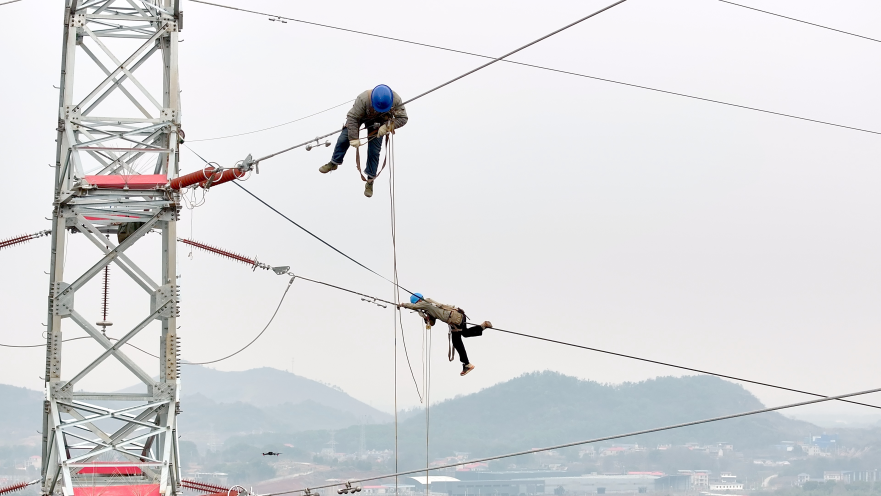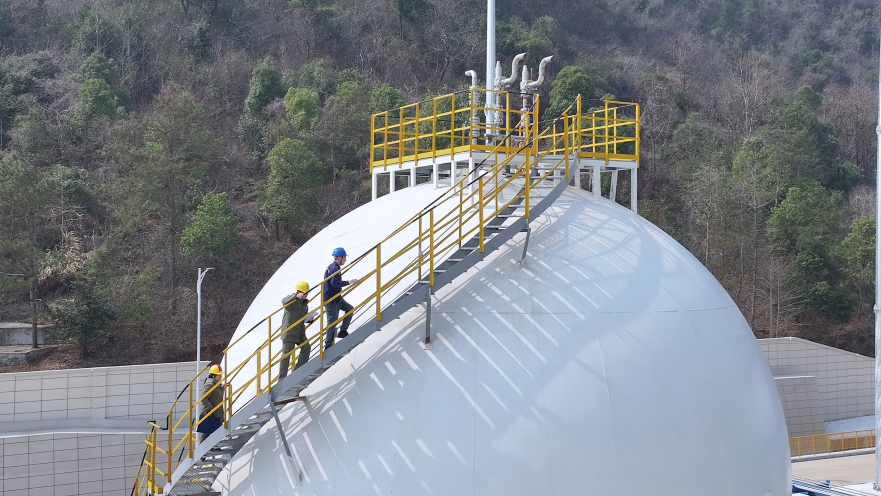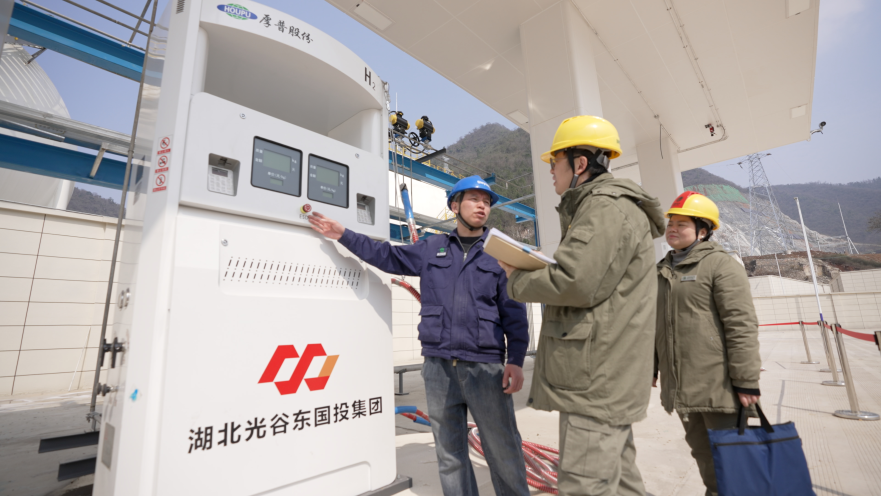On March 7, at the 110 kV step-down substation near the Jiangqiao Hydrogen Production Plant in Songwan Village, Daye City, Huangshi, Hubei Province, power workers successfully switched on the circuit breaker— marking the successful power supply to Hubei’s first hydrogen production plant.

Power Workers Connect the Step-Down Substation to the Grid
Photo by Cao Xiangkui
The Jiangqiao Hydrogen Production Plant is not only the only project in Hubei selected for the National Development and Reform Commission’s Clean and Low-Carbon Hydrogen Innovation and Application Program but also the first in China to undertake scientific research on hydrogen storage in rock caverns. Covering an area of approximately 37.23 mu (about 2.48 hectares), the plant has an annual hydrogen production capacity of up to 1,800 metric tons. It forms a complete green industrial chain integrating hydrogen production, storage, refueling, and utilization.

Giant Spherical Hydrogen Storage Tank
Photo by Cao Xiangkui
Electricity is crucial to hydrogen production. To ensure a stable power supply, the project includes a dedicated substation with a capacity of 40,000 kVA. Additionally, it maximizes the use of local tailings sites by constructing a 30 MW photovoltaic power station in a nearby mining area, significantly increasing the proportion of green energy used for hydrogen production.

State Grid Huangshi Power Supply Company Employees Monitoring Power Load
Photo by Cao Xiangkui
“We use water electrolysis to produce hydrogen. To ensure environmental sustainability, 69% of the electricity will be sourced from the grid, while 31% will be generated by the tailings-site photovoltaic power station,” explained Hu Anyong, the project manager of the Jiangqiao Hydrogen Production Plant.

Huangshi Daye Jiangqiao Hydrogen Production Plant
Photo by Cao Xiangkui
Since the electricity service application was accepted in early March 2024, State Grid Huangshi Power Supply Company assembled a specialized team to conduct on-site visits, oversee the entire substation construction process, and proactively manage the application procedures. As a result, the power delivery timeline was reduced by nearly half compared to the standard process.
Copyright ©1997- by CRI Online All rights reserved